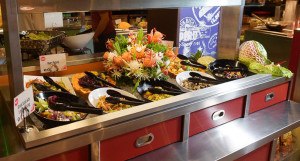The Times-Picayune reports that a 2012 legislative audit concluded restaurant inspection in Louisiana was ineffective, inefficient, disorganized and dangerous.
 The report scorched the Office of Public Health for its failure to detect or prevent potentially hazardous conditions in thousands of retail food establishments, putting the public’s health at risk.
The report scorched the Office of Public Health for its failure to detect or prevent potentially hazardous conditions in thousands of retail food establishments, putting the public’s health at risk.
J.T. Lane, assistant secretary for the Office of Public Health, reorganized the agency, promising that the changes would increase the frequency of inspections and, thereby, better protect consumers wherever food is served.
“The average (restaurant) owner, depending on what they’re operating, could see an increase in when they see an inspector walk through the door unannounced,” Lane said.
More than three years later, has Lane’s promise of a new day held true? Has the restaurant inspection process improved?
Three restaurateurs say they have not noticed much difference. But Tenney Sibley, director of state sanitarian services, said the answer is a resounding, “Yes.”
After the report’s release, the Office of Public Health moved swiftly to address these issues, Sibley said. First, it adopted the U.S. Food and Drug Administration’s recommendations on how frequently establishments should be inspected annually based on risk factor:
Once — Convenience stores and other outlets that mainly serve packaged foods
Twice — Fast food restaurants where products are cooked and served immediately
Three times – Full-service restaurants
Four times — Any establishment serving food to vulnerable populations including hospitals, nursing homes and schools.
Next, the department implemented an electronic scheduling system that tells sanitarians when a restaurant needs to be inspected. Before, the question of which establishment to inspect and when was largely left to the discretion of the sanitarians, with all record keeping and data collection done by hand, Sibley said.
The method by which the state inspects restaurants and other food establishments has also changed. Restaurants are now required, if possible, to fix any critical issues at the time they are discovered, and in the presence of the sanitarian. It used to be that if a restaurant was found to be storing raw chicken above salads, for example, the sanitarian ordered a fix but left the premises without ensuring the problem was addressed, Sibley said.
“I’ve been doing inspections for 26 years. When I started out, as a general rule, everyone got two weeks to fix a problem,” she said. “But as we learned and as the FDA became more active and provided more guidance, the focus changed to immediate correction. If we walked away from someone storing raw chicken over salad, what good is that if we come back in two weeks and you’re doing the same thing? How many people have been exposed to imminent health risks?”










